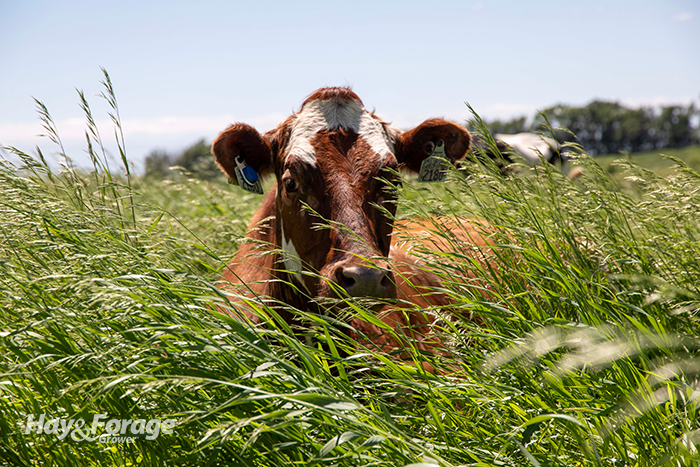
It’s that time of year when grass paints the landscape in green and grows like it’s on a designer steroid. As temperatures warm, cool-season grasses are well rested and ready to take advantage of the conserved water and mineralized nitrogen stores in soil. This perfect storm offers both a curse and a blessing . . . a reprieve and a problem . . . a challenge and solution.
It would be great if cool-season grasses could spread their production over the entirety of a growing season, but such is never the case. Whether making hay or grazing, this presents some unique challenges.
Grasses often grow despite what we do rather than because of what we do; however, like humans, a well-managed grass stand will be more productive and higher quality than a neglected one. Especially where drought is a high probability, which is now about everywhere, post-spring grass strategies can make or break a farm. Moreover, harvested grass forage quality is largely dictated by what we do . . . or don’t do. The three greatest sins of grass management are as follows:
Head off the heads
During this time of year, is there anything that looks better than a field dominated by shin-high, lush-growing, cool-season grasses?
Not only do grasses look good in the spring, but they also taste good and make an abundance of milk and meat. Unfortunately, this doesn’t last forever. A grass plant is clear about when this utopian period is over — it shoots a seedhead.
Once a grass plant raises its seedhead flag, yield gains come to a crashing halt and bad things start to happen from a forage quality perspective. Further, grass quality doesn’t just gradually decline after seedhead emergence and development — it sinks faster than a torpedoed submarine.
Vegetative grasses have some inherent forage quality advantages over legumes, but the primary one is decidedly better neutral detergent fiber (NDF) digestibility. To capitalize on this advantage, grasses need to be cut or grazed prior to seedhead emergence.
A high NDF concentration and low NDF digestibility, as most mature grasses have, is not a good combination. Effectively, feeding that combination to a cow equates to just making more manure. In the case of Kentucky 31 tall fescue, seedhead emergence takes on the added disadvantage of higher toxin levels in the inflorescence.
Finally, many newer grass varieties are bred to head later than older, traditional ones. They’re well worth the investment, especially when paired with alfalfa.
They’re not nitrogen fixers
Grasses don’t care about the price or source of nitrogen; they only care that adequate nitrogen is available.
Specific amounts and the timing of nitrogen applications will vary with region and species, so check your local extension recommendations. There are both good times and bad times to make nitrogen applications, depending on their utilization.
If nitrogen is lacking, grasses will let you know. Growth will be slow, and its appearance will be chlorotic (yellow). Few crop inputs offer a greater economic payback than that first pound of nitrogen on grass stands, assuming adequate soil moisture is available.
In addition to higher yields and healthier plants, nitrogen will also usually boost a grass’s crude protein content.
Leave some leaf
Whether a hayfield or pasture, most grasses don’t tolerate frequent, aggressive defoliation.
If grasses are grazed or cut frequently below 3 to 4 inches, the plant population will thin rapidly. There is some variation among species, but as a rule, grasses demand leaf area and adequate rest. An unwillingness to offer both is often at the heart of an unthrifty stand. The current grass explosion won’t last forever, but stands will stay productive if they’re intentionally managed.

